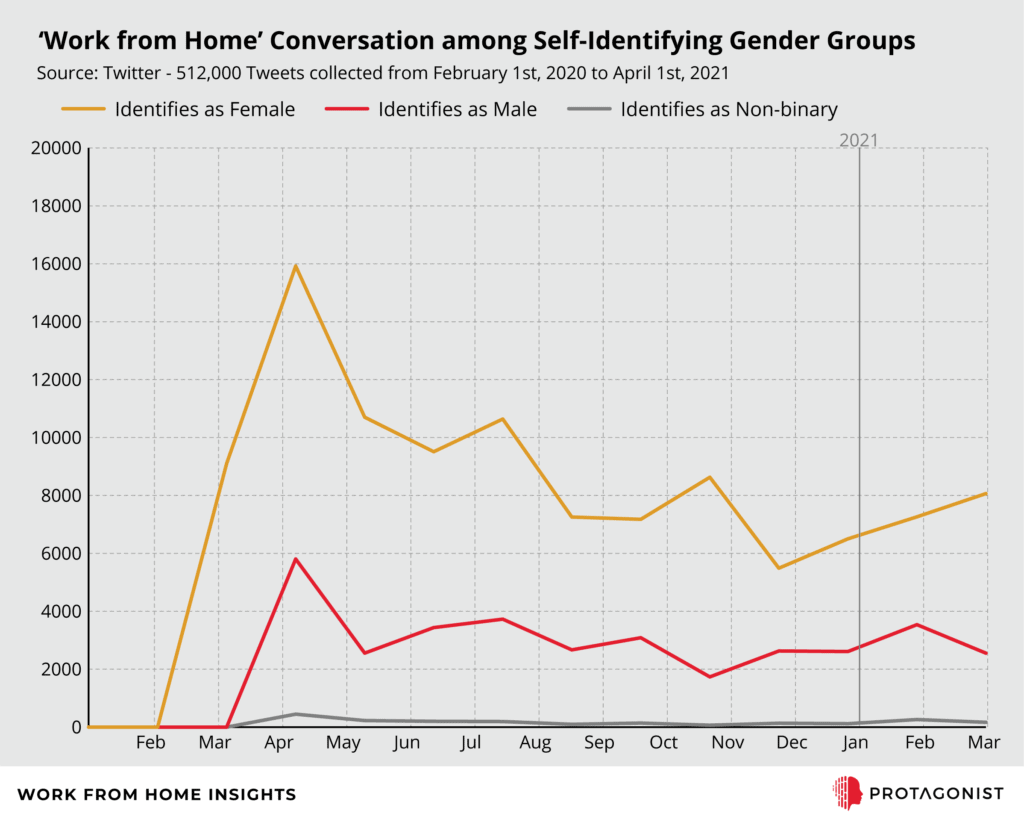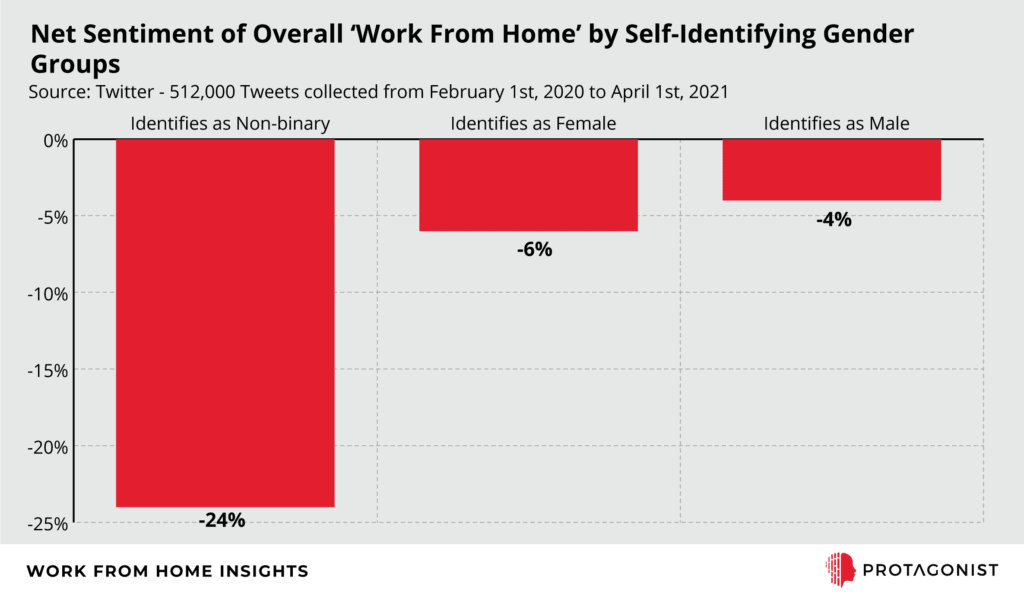As the pandemic continued to change the way we worked, the WFH conversation evolved. The volume graph below shows how the conversation grew in the beginning of the pandemic and was sustained throughout the year among those who identified as male, female and non-binary. At the beginning of March 2020, most states announced shelter-in-place orders prompting many to abruptly shift to a WFH setting. In May, Twitter was one of the first large technology companies to announce a permanent remote workforce for a portion of their employees. Multiple large companies followed suit in subsequent months, including Facebook and Slack in June. As seen the graphic below, these announcements were met with spikes in the conversation as these audiences discussed different aspects of the WFH experience.

The overall WFH conversation consisted of topics ranging from differing levels of productivity to the challenge of balancing personal and work lives. There is a general consensus among these audiences that WFH has changed how people view work as their personal lives and work lives became more intertwined. Across the groups, there was consistent discussion about the inequity of a situation in which some were able to to work from home and some were not. In this conversation, people acknowledged the dangers essential workers faced in going into work, and how many essential workers are also lower wage workers.
Differing Negative Thoughts
In addition to these common threads, we also surfaced differences among the male, female and non-binary audiences.

Children and childcare constituted the largest difference between the male and female groups. For those who identified as female, balancing remote work with the demands of childhood was a major focus. Many discussed the challenges of helping their kids with school work and struggling to share broadband with the family — all while trying to stay focused on their professional jobs. Though male respondents also highlighted this challenge, they did so much less frequently — mentions of the word ‘kid’ were almost double in the female conversation. The female conversation was also more negative than the male conversation.
Male expressions centered around the mental and physical wellbeing challenges of a WFH lifestyle, as well as overcoming logistical problems inherent in a WFH setup. Their conversation highlighted multiple topics, such as which home office gear is better or how to better support their teams remotely, rather than one large central theme.
The non-binary audience focused more on the social aspects of WFH than the male and female segments. The inequities faced by essential workers, who do not have the option to work from home, and who face more risks to their health while being paid less than many WFH office workers, constituted a major topic. This audience also called out hypocritical corporate rules about WFH. Specifically, they noted the speed with which companies embraced WFH when those same companies had, before the pandemic, claimed that WFH was not feasible and denied WFH privileges to many who had requested them (even people with demonstrated needs, such as disabilities). And on the personal side, the non-binary audience lamented the loneliness of the WFH experience. The nature of all of these topics contributed to the more negative sentiment of the non-binary audience.
As the data show, pandemic-caused WFH has laid bare some of the many disparities in our society. For instance, even in two-income households, in many cases women have taken on more of the child care responsibilities and have had to balance those with professional tasks more than men. As pandemic restrictions loosen, most children will go back to school, but many adults will likely choose to keep working from home. We will be curious to see how attitudes toward WFH evolve with these changing dynamics, especially among women.

